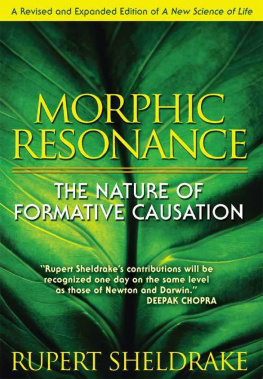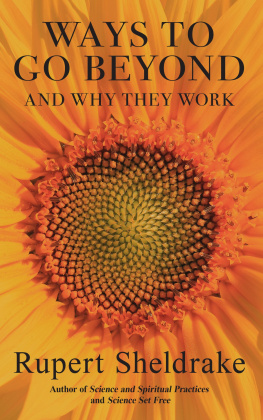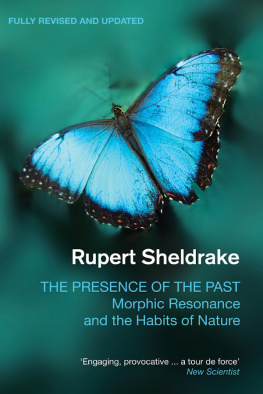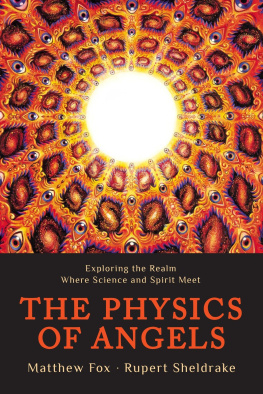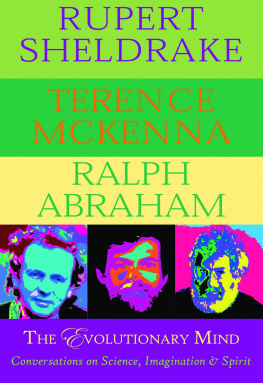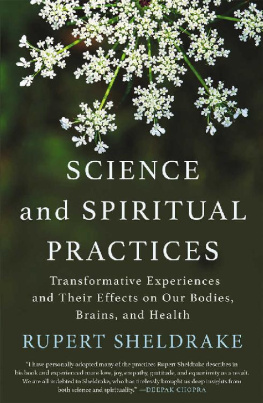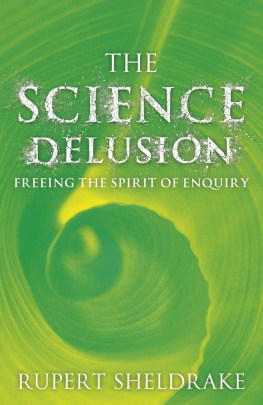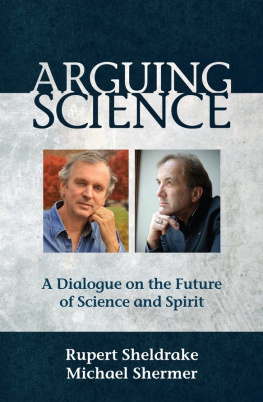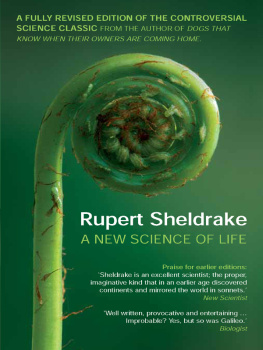
To Dom Bede Griffiths, O.S.B.
MORPHIC RESONANCE

Rupert Sheldrake is one of the most innovative and visionary scientists of our times. Rupert will be both vilified and praised for his theory of morphic resonance. Whatever your personal opinion of his work, he will not be ignored. In my opinion, his contributions will be recognized one day on the same level as those of Newton and Darwin.
DEEPAK CHOPRA, AUTHOR OFREINVENTING
THE BODY, RESURRECTING THE SOUL
Morphic Resonance presents a revolutionary information-field understanding of the nature and evolution of life. Acquaintance with it is an essential part of new-paradigm scientific literacy.
ERVIN LASZLO, AUTHOR OF
SCIENCE AND THE AKASHIC FIELD

ACKNOWLEDGMENTS
In the continued development and testing of the hypothesis of formative causation, many people have helped me through discussions, comments, suggestions and criticisms. In particular I would like to thank Ralph Abraham, Ted Bastin, Patrick Bateson, Dick Bierman, the late Richard Braithwaite, Stephen Braude, John Brockman, David Jay Brown, Christopher Clarke, John Cobb, Stephen Cohen, Hans-Peter Drr, Lindy Dufferin and Ava, Ted Dace, the late Dorothy Emmet, Suitbert Ertel, Addison Fischer, Matthew Fox, Stanislav Grof, Brian Goodwin, Franz-Theo Gottwald, the late Stephen Jay Gould, David Ray Griffin, Christian Gronau, Stephan Harding, the late Willis Harman, Mary Hesse, Nicholas Humphrey, Francis Huxley, Jrgen Krnig, David Lambert, Bruce Lipton, Nancy Lunney, the late Margaret Masterman, Katinka Matson, the late Terence McKenna, John Michell, the late Robert Morris, Carl Neumann, Guy Lyon Playfair, Jill Purce, Dean Radin, Anthony Ramsay, the late Brendan OReagan, Keith Roberts, Steven Rooke, Steven Rose, the late Miriam Rothschild, Janis Roz, Edward St. Aubyn, Gary Schwartz, Martin Schwartz, Merlin Sheldrake, Alexander Shulgin, Harris Stone, James Trifone, the late Francisco Varela, Christopher Whitmont, and Gtz Wittneben.
I am very grateful to Matthew Clapp, who started my website, www.sheldrake.org, in 1997 and served as webmaster until 2002; to my current webmaster, John Caton, who has looked after my site since 2002; and to Helmut Lasarcyk, my German webmaster, who has also kindly translated many letters, articles, and manuscripts for me. I am also very grateful to my research assistant, Pam Smart, who has worked with me since 1994 and has helped in many ways.
I gratefully acknowledge organizational and financial support for research from the Institute of Noetic Sciences, California; the International Center for Integral Studies, New York; the Schweisfurth Foundation, Germany; the Lifebridge Foundation, New York; the Bial Foundation, Portugal; the Fred Foundation, Holland; and the Perrott-Warrick Fund, administered by Trinity College, Cambridge. I am also grateful to the following benefactors for their generous support: the late Laurance Rockefeller; the late Bob Schwartz, of New York; the late C. W. Ben Webster, of Toronto; Evelyn Hancock, of Old Greenwich, Connecticut; Bokhara Legendre, of Medway, South Carolina; Ben Finn, of London; and Addison Fischer, of Naples, Florida.
For helpful comments on drafts of this new edition I thank Ted Dace, Nicholas Greaves, Helmut Lasarcyk, Jill Purce, and Gtz Wittneben. Merlin Sheldrake drew the diagrams in figures 20, A.2, A.3, A.4, and A.5; and Suitbert Ertel gave me permission to reproduce figure A.7.

CONTENTS


PREFACE TO THE 2009 EDITION
This book is about the hypothesis of formative causation, which proposes that nature is habitual. All animals and plants draw upon and contribute to a collective memory of their species. Crystals and molecules also follow the habits of their kind. Cosmic evolution involves an interplay of habit and creativity.
This hypothesis is radically different from the conventional assumption that nature is governed by eternal laws. But I believe that the idea of the habits of nature will have to be considered sooner or later, whether we like it or not, because modern cosmology has undermined the traditional assumptions on which science was based.
Until the 1960s, most physicists took it for granted that the universe was eternal, governed by changeless laws and made up of a constant amount of matter and energy. This idea of the Laws of Nature has been fundamental in modern science ever since the scientific revolution of the seventeenth century, and is rooted in the Pythagorean and Platonic philosophies of ancient Greece. The patriarch of modern science, Sir Francis Bacon, asserted in 1620 that the Laws of Nature were eternal and immutable and sciences founding fathers, including Kepler, Galileo, Descartes, and Newton, saw them as immaterial mathematical ideas in the mind of God. The Laws of Nature were eternal because they participated in Gods eternal nature, and like God transcended time and space. They were enforced by Gods omnipotence.
When the entire universe was believed to be eternal, made up of a constant amount of matter and energy, eternal laws presented no problems. In the nineteenth and early twentieth centuries, most physicists believed that all fundamental aspects of physics were fixed forever the total amount of matter, energy, and electric charge was always the same, according to the laws of conservation of mass, energy, and electric charge.
Only the second law of thermodynamics sounded a different note. The total amount of entropy would increase until the entire universe froze up forevera state epitomized in 1852 by William Thomson, later Lord Kelvin, as a state of universal rest and death. But although heat death would ensue when entropy reached a maximum, the frozen universe would still endure forever and so would the Laws of Nature.
Everything changed with the great revolution in cosmology in the 1960s, when the big bang theory became the new orthodoxy. Ever since, most cosmologists have believed that the universe began about 15 billion years ago. When everything first appeared from nowherethere was no space and time before the cosmosit was less than the size of the head of a pin and immensely dense and hot. The cosmos has been expanding and cooling ever since. All atoms, molecules, stars, galaxies, crystals, planets, and forms of life have come into being in time. They have evolutionary histories. The universe now looks like a vast developing organism, not like an eternal machine slowly running out of steam.
The big bang theory was first proposed in 1927, as the theory of the primeval atom, by Father Georges Lematre, a Roman Catholic priest and cosmologist. He suggested that the universe began with an initial creation-like event, which he described as the Cosmic Egg exploding at the moment of the creation. His theory, which predicted the expansion of the universe, encountered much skepticism, but evidence for an initial creation-like event eventually became too persuasive to be ignored. One of this theorys opponents, the astronomer Fred Hoyle, disparagingly called it the big bang theory, and Hoyles name has stuck.
Although cosmology is now evolutionary, old habits of thought die hard. Most scientists take eternal Laws of Nature for grantednot because they have thought about them in the context of the Big Bang, but because they havent.
Next page
